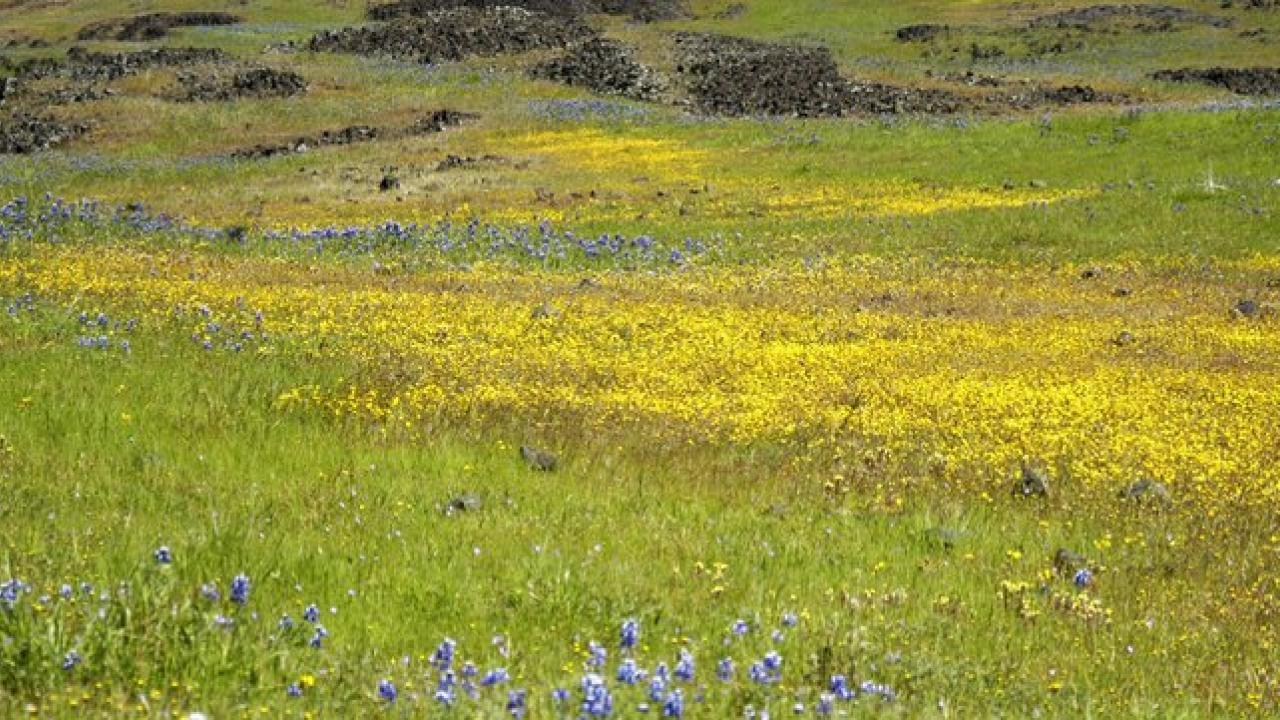
Wildflower mix to be planted along La Rue Road median
In order to convert the high-maintenance, high-water turf landscape on the La Rue Road medians to a low-water, low maintenance feature landscape, we first had to get rid of the Bermuda grass—easier said than done. The extensive root systems of Bermuda grasses go dormant during the winter season rendering them impermeable to traditional spray abatement methods.
This past fall Grounds crews were able to spray this stretch of weeds twice in time for most of it to be removed by Civil and Industrial Services crews. In January our team will seed the area with locally-collected native wildflowers including several species of lupine, clover, and goldfields, to replenish the soil of its nutrients, prevent erosion, and give our team another growing season to make sure the pesky and resilient Bermuda grasses are completely eliminated.
This next fall the area will be planted with a showcase of ‘cast-iron,’ regionally-appropriate plantings from the UC Davis Arboretum All-Star program. This timeline and method is considered a ‘Best Practice’ for landscape work involving complete elimination of Bermuda-type grasses and one that will be used on similar projects in the future.
BACKGROUND
The La Rue Median Strip Conversion is the first of two pilot conversion projects to convert high-maintenance turf areas into lower maintenance and lower-cost landscape types which will showcase Central Valley ecosystems and Valley-Wise plants. In addition to less water use and less cost to maintain, these conversions will be more attractive and give UC Davis a unique look and sense of place.
To learn more about this project, please read our archives on this topic here.
